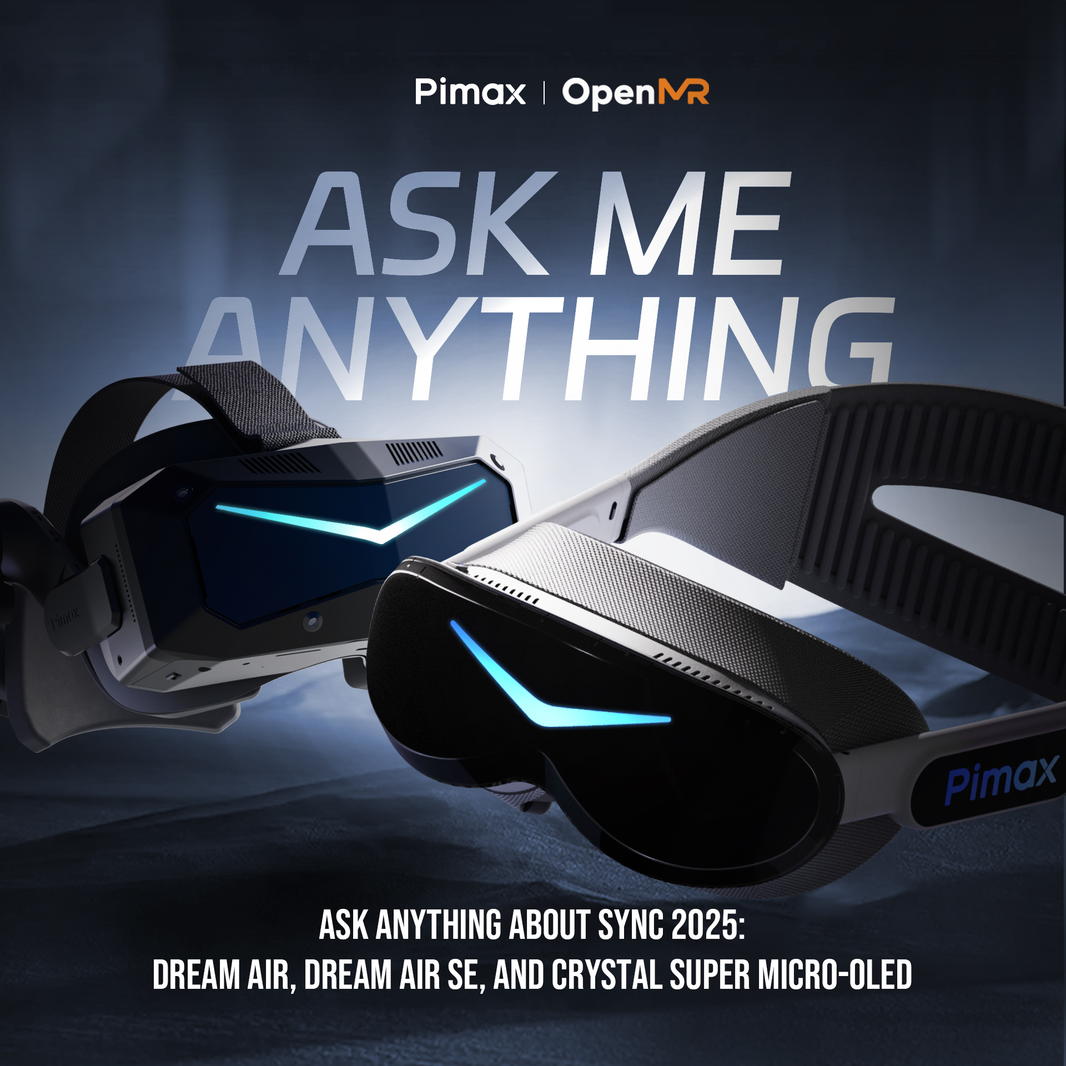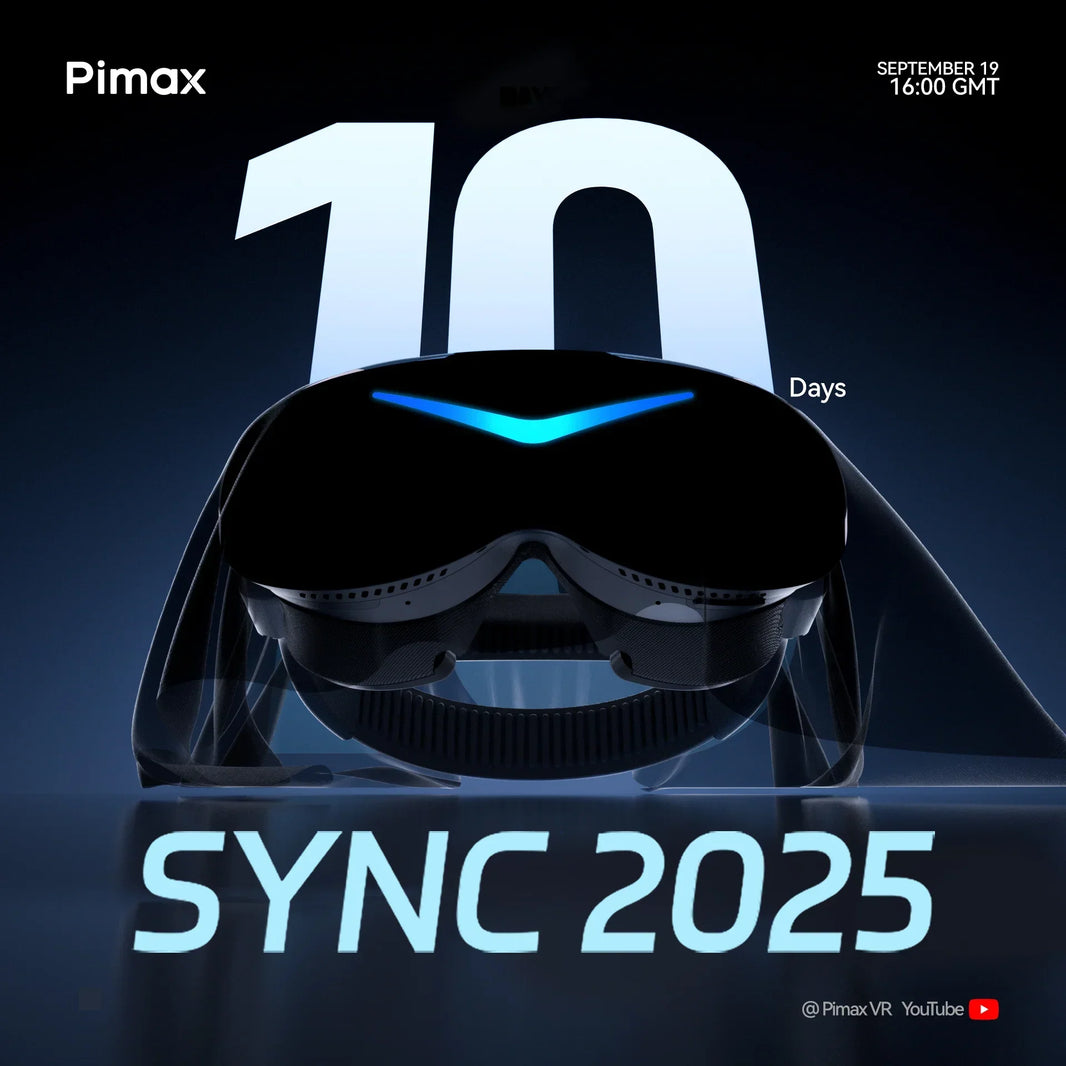profile
We are KOKORO RACING and we love racing games.
We aim to create a website that reviews racing controllers and peripherals from a unique perspective and is useful for all racing game fans!
——————————————————————————
Among the many VR headset manufacturers, Pimax is challenging the limits of high resolution and wide viewing angles, but it is also putting a lot of effort into the racing simulator field, which is a good match for VR, and began full-scale entry into the Japanese market in May of this year.
Meanwhile, I have received a request from PimaxVR Japan to review the "Pimax Crystal Light," so this time I would like to compare it with the Quest series and DPVR E4 that I have used so far, and review the differences in the experience when using it as a racing simulator!
What kind of manufacturer is Pimax?
Pimax is a Shanghai-based VR headset manufacturer founded in 2015, making it a long-established manufacturer in the VR industry. As someone with a long history of VR experience, I was of course aware of its existence, and it is actually quite well-known, especially in the field of VR racing simulators in North America and Europe.
As explained at the beginning, their distinctive feature is that they sell highly specialized, high-performance headsets based on the concept of "challenging the limits of high resolution and wide viewing angles." As a result, their prices are high, and they are generally a manufacturer aimed at heavy VR users.
However, the new "Pimax Crystal Light" has a high resolution of 2880 x 2880 pixels per eye, but by eliminating gimmicks such as eye tracking and lens replacement, it is 30% lighter than the previous model "Pimax Crystal HMD", and at 116,599 yen + 46,595 yen (PimaxPlay membership fee), it is an excellent price that targets mid-range users as well.
So let's get started by unboxing the Pimax Crystal Light!
Check out the Pimax Crystal Light and its accessories
The "Pimax Crystal Light" that was sent this time is a QLED model, and the headset itself is a wired PCVR-only headset that uses the 6DoF inside-out method (a method of checking the surroundings and measuring position using a camera built into the headset) and does not require a separate base station.

This was my first time seeing the actual device, and my first impression was that it was quite large. However, the weight of the device itself is about 830g without the cable, which is not exactly light for its size, but it's not so heavy that it would be difficult to use for long periods of time.
However, when I compare it with the DPVR E4 that I normally use, the difference in both size and weight is clear.

In fact, when you go all the way with it, the rugged black design already looks cool. By the way, when the strap is tightened to the maximum, there is surprisingly not much difference in overall length.

The DPVR E4 does not have any buttons on the HMD itself in order to reduce its weight, but the Pimax Crystal Light has a power button and volume control button on the top right of the unit, and an IPD dial on the inside left of the unit to adjust the distance between the left and right eyes.


After all, it is easier to adjust the volume with a physical button, and IPD adjustment is also stepless using a dial, so I think that an appropriate IPD is an essential feature in pursuit of high image quality.
Also, while the cable connecting to the PC was removable on the previous "Pimax Crystal HMD," on the "Pimax Crystal Light" it is embedded in the body, just like the DPVR E4, which I think is actually an improvement as it makes physical connection errors less likely to occur.
The cable is about 5m long, which should be sufficient for normal use.
The sides are equipped with open-type speakers as standard, and I thought the sound quality was sufficient for playing games, but of course sound leaks out freely, so those who are particular about sound quality or who want to play at night will probably need to prepare separate earphones or headphones.

By the way, this speaker can be replaced with the optional "DMAS Earphones," so it's a great option for those who prefer good sound quality and smart connections.
Next, regarding the actual comfort of wearing it, the weight balance between the front and back is relatively good, so there is little feeling of it slipping forward, and the face pads, back of the head pads, and top of the head strap are also designed to be large, so pressure is distributed well and it is more comfortable to wear than it looks.

However, because it is so firmly fixed, if you want to check the keyboard or monitor, you need to loosen the strap's tightness with the dial and then fix it firmly again, so in terms of convenience, the DPVR E4 wins because it is lightweight and has a flip-up function.
The most impressive feature is the 2880 x 2880 pixel QLED + Mini-LED panel per eye and the aspherical glass lens that projects the image.

The pixel density of the native 4K for one eye is 35 PPD, which is a head and shoulders above the resolution of other VR devices. Furthermore, the material is clearly different from the plastic Fresnel lenses of the Quest 2 and DPVR E4 I've used up until now.
Furthermore, the clarity of VR images depends not only on the resolution, but also on how the images are delivered to the eyes, so we will compare them with the DPVR E4 later to see how the high -transmittance aspherical lens looks.
The accessories included are two rechargeable controllers, two charging cables, an AC adapter compatible with various countries, and a lens cloth, so you can enjoy PC VR without having to purchase any additional optional items.

Personally, when I mainly use it as a racing simulator, I don't use the controller very often and I almost never use it continuously, so that's why I was very impressed that it's rechargeable.
Pimax Play Installation and Setup
To play Pimax Crystal Light, you need to install "Pimax Play" on your PC and have "Pimax Prime" credentials, so first download "Pimax Play" from the Pimax official website .
When you start the app, you will be taken to the login screen, so create a Pimax account and log in.

At first, you will be asked to register your device, so enter your order number (serial number).

The first time you do this, you will likely need to upgrade the firmware on the device, so follow the instructions to complete the update.
As you can see, the setup is very simple, and all the instructions are in Japanese, so it shouldn't be difficult. Also, the Pimax Crystal Light only requires one USB cable to connect to the PC, which is a welcome feature for racing gamers who need multiple USB ports.
Next, regarding "Pimax Prime" eligibility, the Pimax Prime membership fee is the remaining balance on the headset, and payment is made through "Pimax Play."

In other words, 116,599 yen is the upfront cost for Crystal Light, and if you add the remaining amount, the monthly plan will cost 2,157 yen/month x 24 installments, for a total payment of 168,367 yen, or if you pay in full, it will cost an additional 46,595 yen, for a total payment of 163,194 yen.
By the way, once you pay off the remaining balance, the device will be permanently unlocked and you will no longer be charged the Pimax Prime membership fee. If you are considering purchasing, please make sure you understand this before making your decision.
High resolution and aspherical glass lenses for stunningly clear images
Once the setup is complete, I'll check out the video right away. The PC specs I used to test "Pimax Crystal Light" are as follows, and I set the Pimax rendering quality to "Medium" (SteamVR rendering resolution 3232 x 3824) and tested it on iRacing.
OS: Windows 11 Home
CPU: Core i5 14500 2.60GHz
Graphics: GeForce RTX3080 10GB
Memory: DDR4-3200 16GB x 2 (32GB)
SSD: 1TB
Until now, I've been using DPVR E4 with SteamVR's rendering resolution set to 180% (2412 x 2412) and have been satisfied with it for various purposes, including gaming and browsing, but the moment I saw the image in Pimax Crystal Light, I was truly shocked by how clear it was.
As the words "unparalleled clarity" suggest, the resolution is incredibly high, and images of this level further increase the sense of immersion in the racing simulator, making it a clearly superior experience compared to any VR images I've experienced so far.

It may be difficult to see because the photo was taken with a smartphone through the lens of the Pimax Crystal Light, but from the pit at Fuji Speedway, the signs for "YOKOHAMA," "au KDDI," and "Audi Sport" are clearly visible, and the buttons around the dash are also clearly visible.


I also noticed for the first time when I zoomed in on the image that the Porsche logo "STUTTGART" was clearly visible, but even with the image zoomed in this much, the screen door effect, where the mesh pattern on the display is visible, was not visible.
With DPVR E4, no matter how high the rendering resolution was, a mesh pattern was visible when zooming in on a still image like this, so with Pimax Crystal Light, the term "screen door effect" has finally become a thing of the past.
Another difference I noticed in the image is that there are significant differences in color intensity, Godtray light streaks, peripheral distortion, and the range of focus, which I think is probably due to the effect of the aspherical glass lens.
 Pimax Crystal Light on the left and DPVR E4 on the right
Pimax Crystal Light on the left and DPVR E4 on the right
Having experienced the overwhelming immersive feeling of VR, my cockpit is now monitor-less, and I often use VR instead of a monitor, so I personally find this improvement extremely beneficial, and I think it is quite practical for things like watching videos and browsing the web.
Finally, regarding the viewing angle, as no official figures have been released this is just my personal feeling, but the horizontal viewing angle is slightly wider than the DPVR E4's 116°, and the vertical viewing angle is wider upwards but slightly narrower downwards.
 The red frame is Pimax Crystal Light, the green frame is DPVR E4
The red frame is Pimax Crystal Light, the green frame is DPVR E4
The image shows what the view is like when sitting in the cockpit, but with a racing simulator, I think the quality of the experience will definitely improve if the viewing angle, especially in the horizontal direction, is slightly wider.
Also, the appearance is closer to an oval with DPVR E4, but closer to a rectangle with Pimax Crystal Light, and the wider field of view at the corners reduces the feeling of looking into something, giving the impression of greater openness.
However, to be honest, once you get used to the difference, I don't think you'll have any trouble playing a racing simulator with either one, so I think it's best to think of it as just giving you a slightly wider field of view.
The software is highly developed and can be used with a wide range of PC specifications.
The Pimax Crystal Light displayed incredible images, but the software is also multifunctional, so as long as you can find the right compromises in the settings, I think you'll be able to enjoy it even on a mid-range PC.
For your reference, I will list the settings I made during this test, so please use this as a guide for comparing it with the specs of your PC.
First, open the "Device Settings" in Pimax Play and select the refresh rate from the four options in the device section: "120Hz," "90Hz," "72Hz," or "90Hz Interpolation (Lab)."

The higher the refresh rate, the smoother the image will be, but the required specs will also be higher. I chose 72Hz as I prioritized image quality, but if you want smoothness, 90Hz would also be fine.
Additionally, "90Hz Interpolation (Lab)" reduces the resolution to 2160 x 2160 and then upconverts it to 2880 x 2880, significantly lowering the required PC specs, but I noticed a slight degradation in image quality, so it's best to use it depending on your PC specs.

"Rendering Quality" has three settings: "Low," "Medium," and "High." When the rendering resolution on SteamVR is set to 100%, these will be (2156 x 2552), (3232 x 3824), and (4312 x 5100), respectively. You can also customize the settings using "Customize."
At "Low" the image feels a little blurry, but at "Medium" the image becomes much clearer, so if you're going to use Pimax Crystal Light, I recommend a setting close to "Medium" even if it means sacrificing frame rate.
Additionally, "Fixed Foveated Rendering (FFR)" is a technology that reduces the load by lowering the image quality at the periphery. In racing games, there are scenes where you need to check the side mirrors or vehicles beside you using only your eyes, and for recognition alone you don't need that much resolution, so it makes sense in racing games and I have it turned on.

Finally, regarding "OpenXR Runtime," PimaxPlay supports OpenXR, and you can switch runtimes with the push of a button. For compatible software such as iRacing, you can expect slightly better cost performance than launching it via SteamVR.
By the way, if you start the game with OpenXR, you will be able to select "Pimax OpenXR Quad View" in the game menu, so we hope you will try this out as well.
Conclusion
What did you think of this review of "Pimax Crystal Light"?
To be honest, with DPVR, if you increased the resolution setting you could achieve a quality that made the screen door invisible, but I was surprised at how much of a difference the high resolution of 2880 x 2880 pixels and the transparency of the aspherical glass lens made.
The DPVR E4 has a reduced functionality making it compact and lightweight, while the Pimax is committed to performance and continues to push the limits of humanity.These two models have completely opposite concepts, but since visual information is important in the field of racing simulators, I felt that the Pimax Crystal Light, which prioritizes image quality, provided a more satisfying experience.
So, everyone, have a great racing simulator life!X: https://x.com/kokoro_racing
We are KOKORO RACING and we love racing games.
We aim to create a website that reviews racing controllers and peripherals from a unique perspective and is useful for all racing game fans!








